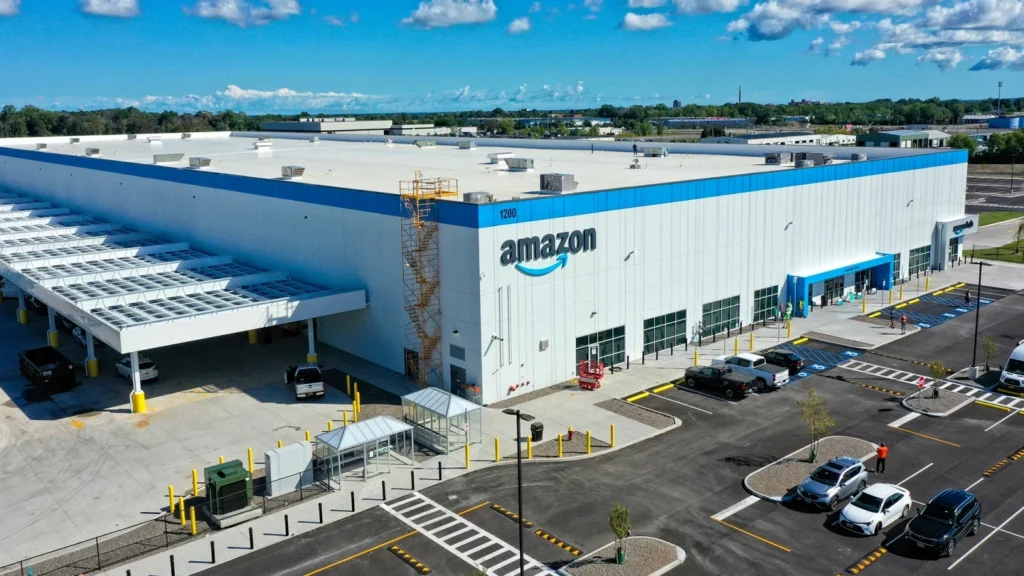Amazon’s Unstoppable Rise: From Online Bookstore to Global E-Commerce Titan

Amazon’s Unstoppable Rise: From Online Bookstore to Global E-Commerce Titan. Amazon’s transformation from a small online bookstore into one of the most dominant e-commerce giants in the world is a testament to visionary leadership, relentless innovation, and customer obsession. Founded by Jeff Bezos in 1994, Amazon has redefined online shopping, setting new standards for convenience, speed, and selection. This article explores the key strategies, turning points, and challenges that shaped Amazon’s success, providing valuable lessons for aspiring entrepreneurs looking to build and scale their businesses.
The Humble Beginnings: Disrupting Book Retail
Amazon began as an online bookstore operating out of Jeff Bezos’ garage. At the time, e-commerce was still in its infancy, but Bezos saw the potential of the internet to revolutionize shopping. Unlike traditional bookstores, Amazon offered a vast selection of books and leveraged the internet’s scalability to serve customers worldwide.
One of Amazon’s first key innovations was its customer review system, which empowered shoppers with information and helped build trust in online shopping. This early focus on user experience laid the groundwork for Amazon’s customer-centric philosophy.

Expansion Beyond Books: The Road to Becoming a Marketplace
Realizing the potential for a broader online retail experience, Amazon expanded beyond books into music, electronics, and eventually every imaginable product category. This marked a significant turning point, transforming Amazon from a niche bookstore into a full-fledged online marketplace.
Amazon’s strategy of reinvesting profits into growth allowed it to rapidly scale its operations. The launch of third-party seller services in 1999 was a game-changer, enabling independent businesses to sell on Amazon’s platform. This move not only expanded Amazon’s inventory but also solidified its dominance as the go-to destination for online shopping.
Innovation and Customer-Centricity: Prime, AWS, and Fulfillment Centers
Amazon’s ability to innovate and adapt to consumer needs has been a driving force behind its success. The introduction of Amazon Prime in 2005, which offered unlimited two-day shipping for a subscription fee, drastically increased customer loyalty and purchase frequency. Over time, Prime expanded to include exclusive content, further reinforcing Amazon’s ecosystem.
Another major milestone was the launch of Amazon Web Services (AWS) in 2006. Originally developed to support Amazon’s own infrastructure, AWS grew into a cloud computing powerhouse, generating billions in revenue and diversifying Amazon’s business model beyond retail.
To support its growing customer base, Amazon invested heavily in logistics and fulfillment centers. Its sophisticated warehouse network and last-mile delivery innovations, including drone deliveries and partnerships with independent couriers, allowed Amazon to set new benchmarks for shipping speed and efficiency.

Overcoming Challenges: Competition, Criticism, and Global Expansion
Despite its success, Amazon has faced significant challenges. Intense competition from Walmart, Alibaba, and other e-commerce platforms has pushed Amazon to continuously refine its strategy. The company has also dealt with criticism regarding labor practices, antitrust concerns, and its impact on small businesses.
Nevertheless, Amazon’s global expansion has been relentless. By entering markets like India, Mexico, and recently South Africa, Amazon has adapted its business model to local consumer behaviors, further solidifying its status as a global leader in e-commerce.
Lessons for Aspiring Entrepreneurs
- Customer Obsession Wins – Amazon’s unwavering commitment to customer satisfaction has been a key driver of its success. Prioritizing customer experience can lead to long-term loyalty.
- Reinvest in Growth – Amazon’s strategy of reinvesting profits into new innovations and infrastructure has fueled its expansion. Entrepreneurs should focus on long-term vision rather than short-term profits.
- Leverage Technology – Amazon has embraced AI, data analytics, and cloud computing to optimize operations and enhance customer experience. Businesses that integrate technology effectively gain a competitive advantage.
- Diversify Revenue Streams – Amazon expanded beyond retail into cloud computing, streaming, and advertising. Entrepreneurs should explore multiple revenue sources to build resilience.
- Adapt to Market Needs – Amazon’s willingness to pivot and expand into new markets has kept it ahead of competitors. Businesses should remain flexible and responsive to evolving customer demands.

The Future: Sustaining Innovation and Market Leadership
Amazon’s journey from a startup to an e-commerce giant offers a blueprint for entrepreneurial success. With advancements in artificial intelligence, automation, and sustainability efforts, Amazon continues to push the boundaries of what’s possible in commerce and technology.
As entrepreneurs look to build their own ventures, Amazon’s story serves as an inspiration—proving that with vision, persistence, and a relentless focus on innovation, it’s possible to reshape an industry and create a lasting legacy.




